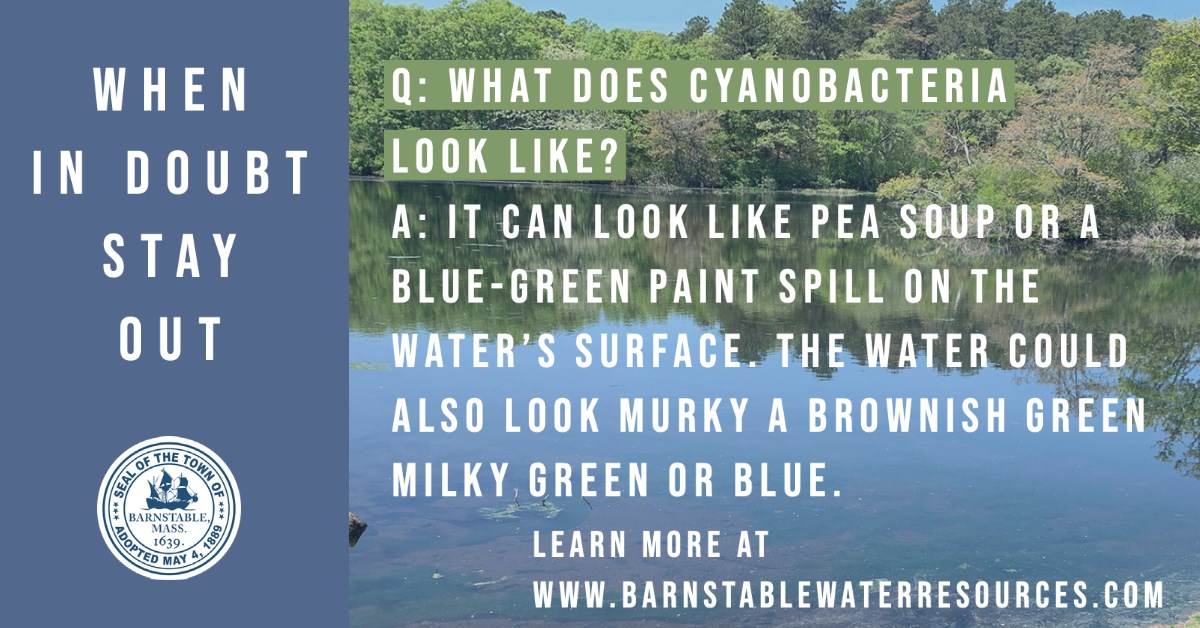 As we As we enter the summer season, we wanted to let you know the Town is planning to resume cyanobacteria monitoring and reporting. However, this program will have a delayed start this year due to unanticipated staff turnover. We expect the program to resume in July. Until this program is back up and running, we wanted to provide some tips to identify cyanobacteria blooms, what to do if you suspect a bloom, and who to contact.
As we As we enter the summer season, we wanted to let you know the Town is planning to resume cyanobacteria monitoring and reporting. However, this program will have a delayed start this year due to unanticipated staff turnover. We expect the program to resume in July. Until this program is back up and running, we wanted to provide some tips to identify cyanobacteria blooms, what to do if you suspect a bloom, and who to contact.
Identifying Cyanobacteria Blooms
The Massachusetts Department of Public Health has provided examples of cyanobacteria blooms with scums and without scums. https://www.mass.gov/service-details/identifying-cyanobacterial-blooms-and-scums-photographs-of-blooms-and-scums
How do I know if there is a harmful algal bloom in the water?
Cyanobacteria can cause the water to appear slightly discolored, cloudy, or resemble pea soup or paint. They are usually blue or green but can also be brown or red. They can also give the water a bad odor. The cyanobacteria in some blooms are dispersed throughout the water, while in other blooms they are concentrated in a scum or mat, either on the surface of the water or in sediment along the shoreline.
What if you Suspect a Cyanobacteria Bloom?
WHEN IN DOUBT, STAY OUT!
If you see a possible cyanobacteria bloom, avoid contact with the water.
Contact the Health Department at 508-862-4644 or email health@town.barnstable.ma.us, if the bloom is at a recreational waterbody.
Want to Learn More About Cyanobacteria?
https://www.mass.gov/info-details/harmful-algae-blooms-in-freshwater-bodies
https://www.who.int/publications/m/item/toxic-cyanobacteria-in-water—second-edition






